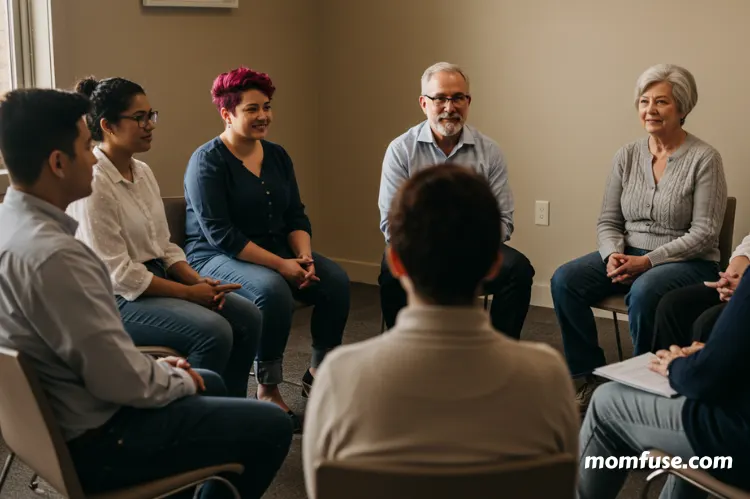Supporting a family member through rehabilitation can be an overwhelming journey filled with highs and lows. It’s important to have a thorough understanding of the process to provide the best support. This guide will help you navigate the complexities of rehab, fostering an environment that encourages growth and restoration.
The Importance of Rehabilitation

Rehabilitation is more than a treatment; it represents a journey toward reclaiming one’s life. For many individuals, rehab serves as a critical turning point. It allows them to address personal issues, rebuild vital skills, and restore self-esteem. This structured support is fundamental for lasting recovery, as it focuses on physical health and mental well-being.
During this time, family plays a key role. Having an understanding support system can significantly influence recovery outcomes. Many studies emphasize that a nurturing environment can facilitate faster recovery times and instill a sense of confidence in individuals.
Understanding the Rehab Process

Committing to rehab often involves a thorough assessment that determines the appropriate approach required for each individual. This could entail an inpatient program, outpatient services, or counseling. The right choice often hinges on the severity of the problem and the individual’s circumstances.
A person battling substance use disorders might require a more intensive approach, such as possibly staying in a facility designed for treatment. Whether it’s drug rehab in California, Texas, New York, or anywhere else, the tailored process starts with detoxification, followed by therapy sessions aimed at healing the emotional scars often associated with addiction. From there, individuals usually progress into structured routines that include group therapy, one-on-one counseling, and skill-building exercises to support long-term recovery.
Family involvement is often encouraged, as it helps rebuild trust and provides a reliable support network. Many programs integrate wellness practices such as meditation, exercise, and nutrition to strengthen both mind and body. Aftercare planning is another critical step, preparing individuals with strategies and resources to prevent relapse once they leave the program.
Therapeutic Elements

Therapy plays a pivotal role in rehabilitation. Various therapeutic methods cater to individual needs, and understanding these can help family members provide supportive insights. Cognitive Behavioral Therapy (CBT), group therapy, and family counseling are popular options that promote healing and provide a safe space for expressing emotions.
With CBT, individuals learn to recognize and modify negative thought patterns that contribute to their struggles. This practical approach often yields significant improvements in their coping mechanisms. Group therapy, on the other hand, creates a supportive community, fostering understanding and shared experiences, allowing participants to realize they are not alone in their journey.
Encouraging Independence
A significant aspect of rehabilitation is empowering the individual to become independent. Family members can assist in this growth by encouraging autonomy in daily tasks. This could be reflected in allowing them to manage their schedules or engage in hobbies that promote self-esteem.
In doing so, family members should be mindful not to enable dependencies. While assistance is necessary, it shouldn’t undermine the person’s capability to handle challenges. Celebrating small victories along the way can significantly boost confidence and provide a sense of accomplishment.
Open Communication

Creating an open line of communication is vital throughout the rehab process. Encouraging candid discussions fosters a supportive atmosphere where individuals feel comfortable sharing their thoughts and feelings. This transparency can lead to significant breakthroughs in therapy sessions.
Family members should practice active listening, demonstrating empathy and validating the person’s feelings without judgment. They create greater trust and openness by doing this, which can promote healing and inspire people to talk about their difficulties.
Setting Realistic Expectations
Recovery is rarely a linear path. It’s typical for there to be setbacks as individuals navigate their journeys. Having realistic expectations can help manage the emotional climate for both family members and the person in rehab. Understanding that healing is a process can alleviate the stress of expecting rapid changes.
Supporters should remember to focus on progress rather than perfection. Small hurdles can turn into significant improvements, and celebrating those milestones is important for cultivating a positive mindset throughout recovery.
Self-Care for Family Members

In the process of caring for someone undergoing rehab, it’s easy for family members to neglect their well-being. Engaging in self-care is critical to remain mentally and emotionally equipped to support their loved one. This might involve seeking support for themselves through therapy or joining support groups.
A healthy balance includes finding time for personal interests and maintaining social connections. Remembering to care for oneself can prevent burnout, ensuring that family members remain strong pillars of support.
Guiding a family member through rehabilitation can be a deeply rewarding experience that strengthens relationships and fosters personal growth. Family members can have a big influence on their loved one’s recovery by being aware of the rehabilitation process, promoting independence, and keeping lines of communication open.
Read Next: How to Train for Root-Level Healing with Integrative Therapy

